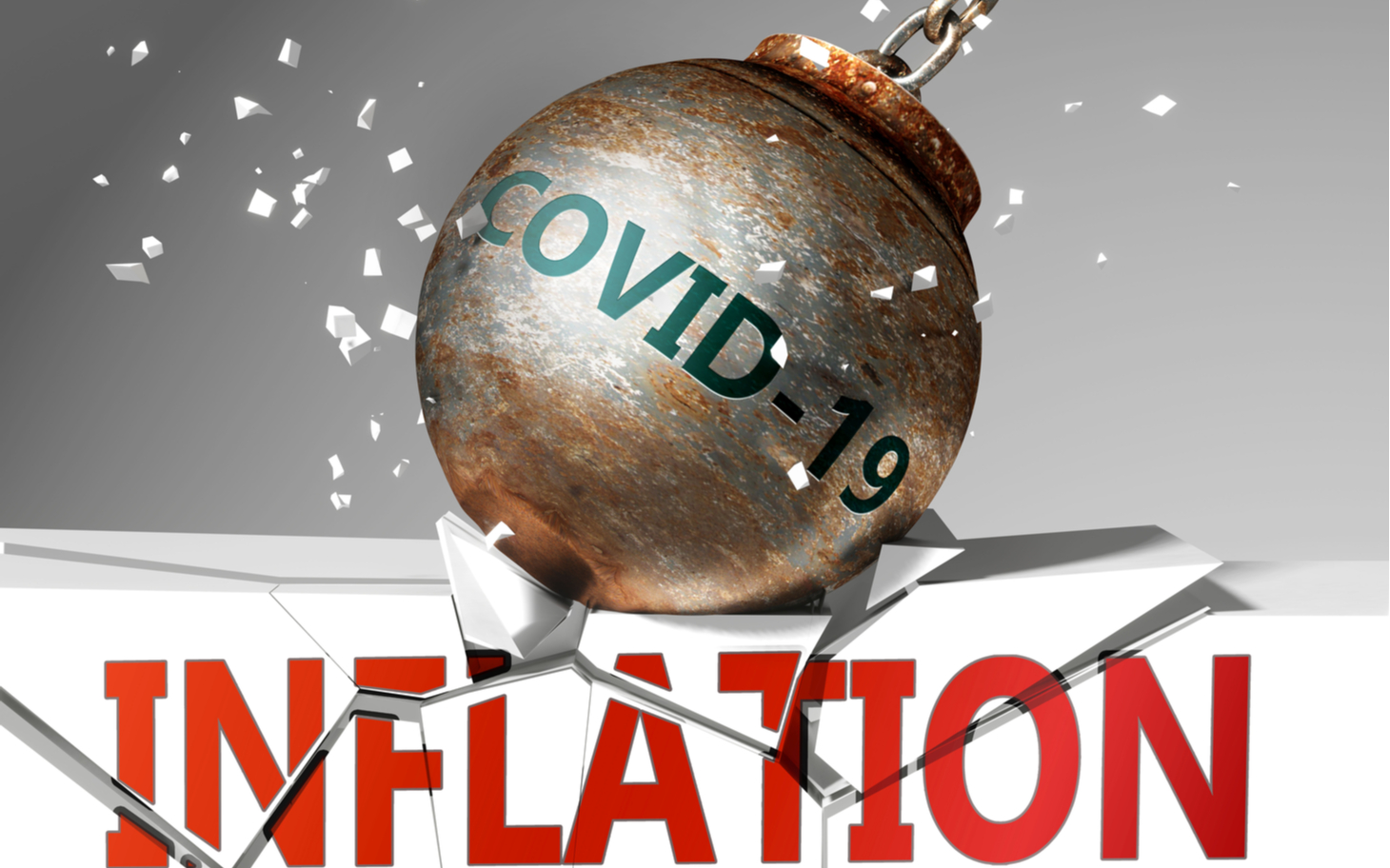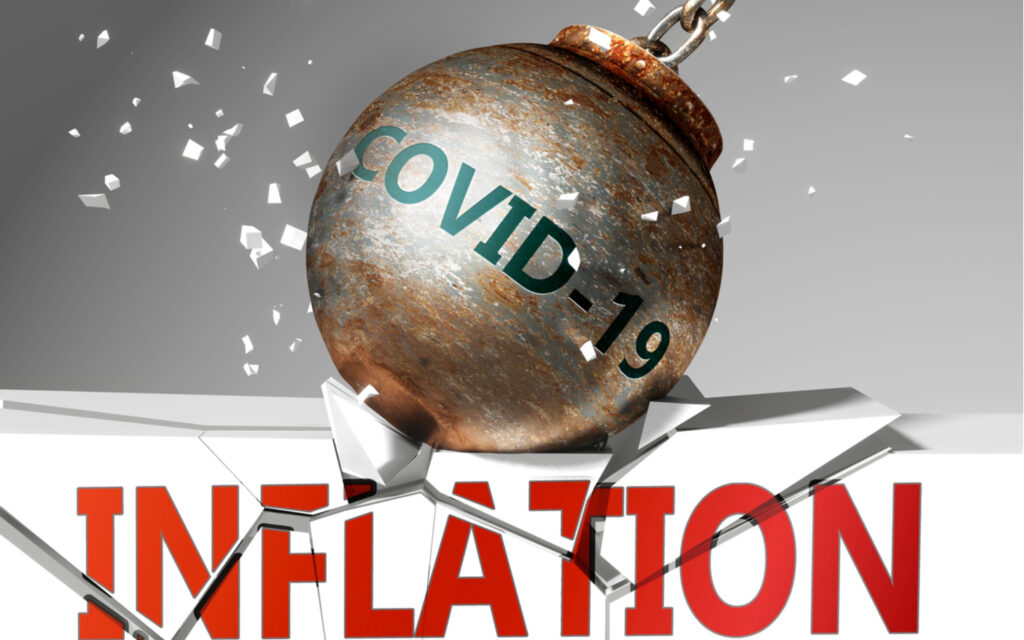
Inflationgate exposed: For the time being, my pandemic rants are over. But it isn't just on Covid-19 that the narratives are shifting. It is also concerned with inflation. And, like with Covid-19, the mainstream media has turned on its masters.
Boaz Shoshan and John Butler, two of my Southbank Live colleagues, have been covering more nefarious activities. Boaz and John also discuss today's theme, which is skyrocketing inflation. Check out their perspective on what's going on before you hear mine. After all, John foretold this inflationary catastrophe in Fortune & Freedom just days before it took off.
Inflation appears to be out of control. In the United States, it has reached the quickest rate since 1982: 7%.
In Germany, inflation has been at its highest level since 1992, when reunification prompted a price surge addressed with the kind of tight monetary policy that earned the Bundesbank its formidable reputation. N.B. That will not happen this time because the European Central Bank (ECB) is in charge.
But there's something more interesting going on than inflation reaching frighteningly high levels. As the Financial Times puts it:
Overinflation, a covert fight, is raging. Along with the public debate over how to defuse the approaching cost of the living problem, a guerrilla battle is raging over how U.K. inflation is calculated and whether that calculation may be adjusted retroactively.
When governments are proven to be wrong, they love to change the method they measure things. Consider this Australian remark, which made me giggle for 30 minutes. It comes from New South Wales (NSW) state premier Dominic Perrottet:
We released modelling about the NSW health system last week. We are sharing where we are tracking against that modelling today, and […] we are now tracking better than the best case scenario we disclosed last week.
Yes, after having its old modelling blown out of the water, the government just changed the modelling rather than identifying Covid hospitalizations and deaths as a complete and unexpected failure. And the administration barely waited a week before declaring that they were performing better than expected.
Back to inflation and the dispute over how to calculate it.
For example, in the United Kingdom, there are three different metrics of inflation. When it comes to prices, the F.T. says that “the range is huge” and that “if your pension were linked to [the highest measure], the growth would be 54% more than if it was linked to the lowest.” Nonetheless, the government's most recent strategy is to do just that.”
But I don't want to concentrate on the United Kingdom. I'd want to show you what's been going on in the United States because it may reveal what occurs next here.
American inflation statistics can also be broken down into a variety of sub-sets. And recently, central bankers have been busier than ever faking the data under the pretence of the pandemic.
The Federal Reserve distinguishes between “flexible” and “sticky” prices. The argument is that because flexible prices move around a lot more, they may fall again after a significant surge. As a result, any short-term increase in flexible prices is likely to reverse, but not in sticky prices.
Of course, the inverse logic is also valid. If inflation were poised to spiral out of control, flexible prices would rise first, signalling further inflation would follow in sticky prices. Governments, on the other hand, do not employ two-armed economists. The editors of Fortune & Freedom, on the other hand, have two arms. As a result, we consider both “on the one hand” and “on the other hand.”
According to Bloomberg, “12-month inflation for flexible pricing reached a record in 2021,” with data dating back to 1967, while “sticky prices are climbing at their fastest rate since 1991.” Of course, not long ago, flexible prices were increasing at their quickest rate since 1991 as well.
What has changed here, as with Covid-19, is that the mainstream media is becoming more aware of what is going on?
Bloomberg's John Authors said, “Many arguments were presented in mid-year, earnestly and honestly, to show that increased inflation numbers were merely a feature of the pandemic's transitory consequences.” “None of them are valid any longer.”
But then the typically mild-mannered expert got even more snarky:
The Bureau of Labor Statistics began publishing an index that omitted food, fuel, lodging, and used automobiles and trucks — an unusual mix to exclude — yet captured the majority of the pandemic's strange effects.
Unfortunately, inflation, as measured by that index, continues to grow, reaching a 30-year high:
Excluding Everything, You Want To Exclude From Inflation
The measure aimed to eliminate transient impacts has reached a 30-year high.
We cannot post the chart that follows, but you may get the concept from its title and subheading.
The authors provide a thorough breakdown of the shady modifications made to other inflation indicators and how they are now displaying inflation.
Arguments based on modified data that previously suggested inflation was temporary now suggest the inverse.
Nonetheless, monetary policy is not yet reversing direction, except for an interest rate increase in the United Kingdom. The central bankers continue to predict a tighter future, but not just now.
As a result, inflationary pressures have risen to alarming levels. We're talking about levels where even tighter monetary policy won't stop it.
However, not everyone in the media is willing to label the emperor naked. Some commentators have argued that inflation is positive, good for the poor, terrible for the rich, or that it should be allowed to “go wild” in the U.K.
Given the reaction it will elicit from people who read the comments and experience otherwise daily, this is, quite honestly, HILARIOUS. I mean, the thought of someone even attempting to argue. Oh, never mind.
A series of polls in the United States have already revealed that inflation has become a more significant concern than the pandemic. And governments are being held accountable.
When faking the figures no longer works, many public policymakers whose positions have become untenable choose to resign. However, to retire from the Federal Reserve, you must be caught doing some shady things.
Instead, when they are proven incorrect, Federal Reserve policymakers retire terms. That's precisely what Fed Chair Jerome Powell said in December: “it's probably a good time to abandon that label [transitory],” he said.
To be clear, it is his responsibility to retire inflation.
Instead, he's pumping it up with Q.E. and low-interest rates, then abandoning the language he used to disguise the consequent inflation…
According to the Taylor Rule, a proposal to automate monetary policy based on inflation and GDP statistics, U.S. interest rates would be approximately 6%! That's, uh, far higher than today's 0%.
However, even a 6% increase is still less than the inflation rate in the United States. By the most critical metric, monetary policy would remain loose.
Another perspective on inflation focuses on employment. The four-week average weekly jobless claims have now reached their lowest level since 1973. And, by some measures, monetary policy is the loosest it has ever been.
What could central bankers possibly need to tighten any further? And why didn't they do that months ago, rather than faking data?
That is, at long last, what the media is asking.
All of this is centred on consumer costs. However, because businesses pass on costs, producer prices are also important.
When we projected that inflation would become an issue early last year, the rise in producer prices tipped us off.
And according to CNBC, “wholesale costs in the United States will rise about 10% in 2021.” That's also a first, but the data only dates to 2010. It also implies that consumer prices would continue to grow.
Whatever political repercussions governments face due to inflation, things are just going to get worse. This indicates that people are revolting against their governments over epidemic and economic management.
But who will they cast their ballots for? Mainstream political parties are only offering more of the same.
I'll come tomorrow to laud Caesar, not to bury him. I'll ask what occurs when central bankers tighten monetary policy to slow inflation induced by bottlenecks.
Do you believe that raising interest rates will fix a supply chain crisis?

Nick Hubble
Editor, Fortune & Freedom
The post Inflationgate exposed appeared first on Fortune and Freedom.
The post Inflationgate exposed appeared first on https://gqcentral.co.uk


